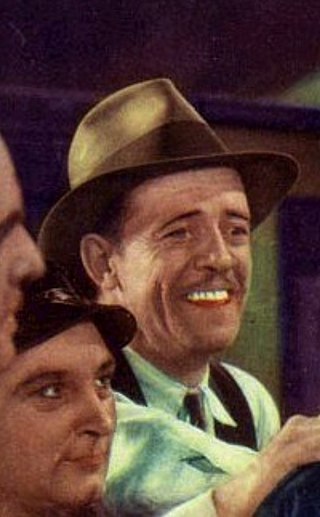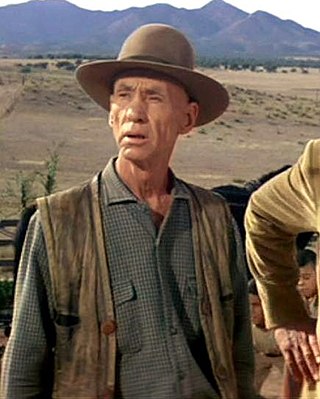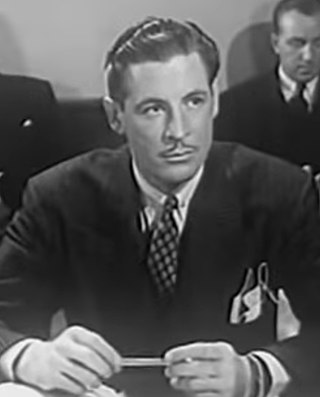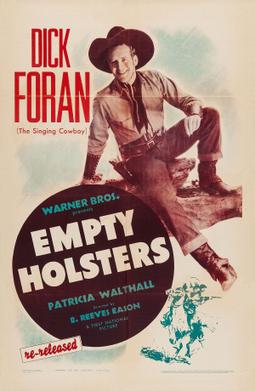Related Research Articles

Bride of the Monster is a 1955 American independent science fiction horror film, co-written, produced and directed by Edward D. Wood Jr., and starring Bela Lugosi and Tor Johnson with a supporting cast featuring Tony McCoy and Loretta King.

Dolores Agnes Fuller was an American actress and songwriter known as the one-time girlfriend of the low-budget film director Ed Wood. She played the protagonist's girlfriend in Glen or Glenda, co-starred in Wood's Jail Bait, and had a minor role in his Bride of the Monster. After she broke up with Wood in 1955, she relocated to New York and had a very successful career there as a songwriter. Elvis Presley recorded a number of her songs written for his films.

Edward Davis Wood Jr. was an American filmmaker, actor, screenwriter, and pulp novel author.

Glen or Glenda is a 1953 American independent exploitation film directed, written by and starring Ed Wood, and featuring Wood's then-girlfriend Dolores Fuller and Bela Lugosi. It was produced by George Weiss who also made the exploitation film Test Tube Babies that same year.

The gunfight at the O.K. Corral was a gunfight that lasted less than a minute between lawmen led by Virgil Earp and members of a loosely organized group of outlaws called the Cowboys that occurred at about 3:00 p.m. on Wednesday, October 26, 1881, in Tombstone, Arizona, United States. It is generally regarded as the most famous gunfight in the history of the American Old West.

Louis Burton Lindley Jr., better known by his stage name Slim Pickens, was an American actor and rodeo performer. Starting off in the rodeo, Pickens transitioned to acting, and appeared in dozens of movies and TV shows. For much of his career, Pickens played mainly cowboy roles. He is perhaps best remembered today for his comic roles in Dr. Strangelove, Blazing Saddles, 1941, and his villainous turn in One-Eyed Jacks with Marlon Brando.

Ed Wood is a 1994 American biographical comedy-drama film directed and produced by Tim Burton and starring Johnny Depp as Ed Wood, the eponymous cult filmmaker. The film concerns the period in Wood's life when he made his best-known films as well as his relationship with actor Bela Lugosi, played by Martin Landau. Sarah Jessica Parker, Patricia Arquette, Jeffrey Jones, Lisa Marie, and Bill Murray are among the supporting cast.
Gunfighters, also called gunslingers, or in the late 19th and early 20th century, gunmen were individuals in the American Old West who gained a reputation of being dangerous with a gun and participated in gunfights and shootouts. Today, the term "gunslinger" is more or less used to denote someone who is quick on the draw with a handgun, but this can also refer to those armed with rifles and shotguns. The gunfighter is also one of the most popular characters in the Western genre and has appeared in associated films, television shows, video games, and literature.

George Glenn Strange was an American actor who appeared in hundreds of Western films. He played Sam Noonan, the bartender on CBS's Gunsmoke television series, and Frankenstein's monster in three Universal films during the 1940s.
Timothy James Bottoms is an American actor and film producer. He is best known for playing the lead in Johnny Got His Gun (1971); Sonny Crawford in The Last Picture Show (1971), where he and his fellow co-stars, Cybill Shepherd and Jeff Bridges, rose to fame; and as James Hart, the first-year law student who battles with Prof. Kingsfield, in the film adaptation The Paper Chase (1973). He is also known for playing the main antagonist in the disaster film Rollercoaster (1977) and for playing President George W. Bush multiple times, including on the sitcom That's My Bush!, the comedy film The Crocodile Hunter: Collision Course and the docudrama DC 9/11: Time of Crisis.

Tom London was an American actor who played frequently in B-Westerns. According to The Guinness Book of Movie Records, London is credited with appearing in the most films in the history of Hollywood, according to the 2001 book Film Facts, which says that the performer who played in the most films was "Tom London, who made his first of over 2,000 appearances in The Great Train Robbery, 1903. He used his birth name in films until 1924.

Kenneth Olin Maynard was an American actor and producer. He was mostly active from the 1920s to the 1940s and considered one of the biggest Western stars in Hollywood.

Barton MacLane was an American actor, playwright, and screenwriter. He appeared in many classic films from the 1930s through the 1960s, including his role as General Martin Peterson on the 1960s NBC television comedy series I Dream of Jeannie, with Barbara Eden and Larry Hagman.

Claude Aubrey Akins was a Cherokee-American character actor with a long career on stage, screen, and television. He was best known as Sheriff Lobo on the 1979–1981 television series B. J. and the Bear, and later The Misadventures of Sheriff Lobo, a spin-off series.

Hank Worden was an American cowboy-turned-character actor who appeared in many Westerns, including many John Ford films such as The Searchers and the TV series The Lone Ranger.

Addison Byron Owen Randall was an American film actor, chiefly in Westerns. He often used a pseudonym for his film work, chiefly Jack Randall, and he played roles as Allen Byron and Byron Vance.

John Nicholas "Dick" Foran was an American actor and singer, known for his performances in Western musicals and for playing supporting roles in dramatic pictures. He appeared in dozens of movies of every type during his lengthy career, often with top stars leading the cast.

Wild Bill Elliott was an American film actor. He specialized in playing the rugged heroes of B Westerns, particularly the Red Ryder series of films.

Bullwhip is a 1958 American CinemaScope Western film directed by Harmon Jones and starring Guy Madison and Rhonda Fleming. The film is about a cowboy in Abilene, Kansas who agrees to a marriage to avoid being hanged. The film was shot at Kenny Ranch in Murphys, California. It was the final feature film screenplay of Adele Buffington.

Empty Holsters is a 1937 American Western film directed by B. Reeves Eason and written by John T. Neville. The film stars Dick Foran, Patricia Walthall, Emmett Vogan, Glenn Strange, Anderson Lawler and Wilfred Lucas. The film was released by Warner Bros. on July 10, 1937.